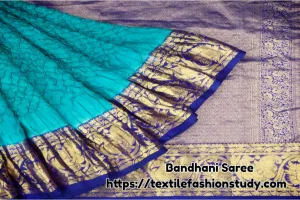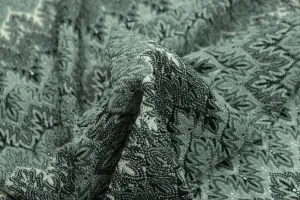Table of Contents
Denim Washing
Types of denim garment washes are done on denim fabric to give it special effects. Denim is the fashion of the modern world. However, different types of washes are done on denim fabric to give it special effects. Especially, denim wash affects various properties of denim garments such as appearance or color change, softening, dimensional stability as well as different handle properties. Hence, these effects depend on the condition of processing such as time, temperature, liquor ratio of washing batch, and chemicals used.
History of Denim Wash
- Jack Spencer started the concept of washing Denim jeans for the brand Lee.
- Francois Girbaud first started Stone-wash
- The concept of sandblasting was started in 1988 by a number of branded companies in Italy.

Process and Functions of the Denim Washing Process
Denim washing is a step-by-step process. The following are the major functions of the denim washing process: They are-
- Pre-treatment
- Wash
- Tinting and Dyeing
- Softening
Pre-Treatment:
Pre-treatment is the first and most important task of denim washing.
- Firstly, pre-treatment is done for removing impurities from the denim fabric to smooth the next process.
- Secondly, desizing is done to remove size material from the fabric.
- Thirdly, in the pre-treatment process, the anti-creasing agent is used to avoid creasing of the fabric which can occur due to machine parameters such as rotating speed, chemical reactions, production of the fabric and storage.
Why Garment Washing is Important?
Denim garment Washing is important to produce different effects on denim. They are-
- Washing needs to produce effects like color fading with or without patchiness.
- To produce crinkles.
- For seam puckering.
- To remove hairiness.
- De-piling.
- For softened hand feel.
- Finally, stabilized dimensions, etc.
Tinting and Dyeing
A denim garment is tinted or dyed after the washing process. However, this process is used to change the hue or tone of indigo. Hence, a worn or used look is produced on the denim garment. This process is followed by dye-fixing and clean-up of superficial dye and it takes from 5 to 15 minutes.
Softening
Denim garment needs softening because it is a heavy fabric. Basically, yellowing is a major problem encountered during this process. Furthermore, Indigo-dyed fabric is very prone to yellowing. Hence, all organic polymers are prone to yellowing like cotton. However, various point is responsible for yellowing such as exposure to light, impurities, incorrect process temperatures, or a combination of the same so it is difficult to pinpoint the exact causes of yellowing.
However, yellowing can be minimized in the following way. They are-
- Firstly, to ensure that bleaching and bleach neutralization residues are minimized or eliminated.
- Secondly, to avoid the use of chemicals that make yellowing problems.
- Thirdly, back staining should be minimized.
- After that, it needs to avoid leaving denim garments damp any longer than necessary.
- Finally, drying and curing conditions need to take control.
Types Of Denim Garment Washing
Denim garment washing is an additional process to adding some features to the garment. I have presented flow chart of different denim washing process. The following are the different types of denim garment washing with advantages and limitations of denim washes. They are-
- Chemical Washes/ Bleach Wash
- Rinse Wash
- Enzyme wash
- Acid wash
- Mechanical washes
- Stonewash
- Microsanding
Chemical Washing
Different types of strong oxidative bleaching agents such as sodium hypochlorite or potassium permanganate are used for chemical washing.
Process Cycle of Chemical Washing:
Garment loading with or without stone
↓
Desizing
↓
Rinse
↓
Bleaching
↓
Rinse
↓
Bleach with cold water
↓
Optical brightening agent application
↓
Softening
Limitations of Chemical washing:
The following are the limitations of chemical washing. They are-
- Firstly, this washing process is difficult to control.
- Secondly, it needs antichlor treatment.
- Thirdly, it causes corrosion.
- After that, it causes a yellowing problem.
- Moreover, it is harmful to human health.
- Finally, it is one type of source of environmental pollution.
Rinse Wash
Rinse wash is a basic wash type in denim garment washing. However, rinse washing is used to keep the fabric appears as dark as possible and make the fabric wearable. Basically, the sizing is done during fabric production so it needs to desizing the fabric for improving the hand feel of the fabric. However, in an open-width washing machine, the denim is desized width-wise and the dye is not washed out. One variety of the rinse wash is desizing ready-to-wear trousers in drum washing machines.
Limitations
The limitation of rinse wash is that it has very poor rub fastness.
Enzyme Washing
Enzyme washing is another important denim garment-washing process. The enzyme is a kind of protein that is obtained from the fermentation method of naturally existing bacteria & fungi. Generally, it is called Cellulose and it works on Cellulose fiber only like cotton. The vital point of enzyme washing is that it is easy to stop the action of enzymes and this is an environment-friendly wash.
Advantages of Enzyme Wash
The following are the advantages of enzyme wash. They are-
- Firstly, it produces increased luster.
- Secondly, less corrosive.
- Thirdly, less damage to seams.
- Moreover, it produces an excellent soft handle.
- More reproducible results.
- Less wear and tear of machinery.
- Bio polishing is used to have protruded fiber removal from denim & oven fabric
- Finally, it is widely applicable to cotton and its blends.
Limitations of Enzyme Washing
The following are the limitations of enzyme washing. They are-
- The garment load size of the machine is limited.
- Post-treatment is required.
Acid Washing
Acid washing is done with pumice stones presoaked in a solution of sodium hypochlorite or potassium permanganate. It is a non-uniform contrast.
Process Cycle of Acid Washing:
Garment loading with a pumice stone
↓
Desizing
↓
Dry
↓
Antichlor
↓
Cool with adding water
↓
Dry tumbler
↓
Optical brightening agent application
↓
Softening
Limitations
- It creates a yellowing problem.
Remedy:
- This problem can be removed by using ethylene diamine tetra acetic acid as a chelating agent.
Stone Wash
Stonewash is another denim garment washing process and it is quite expensive and requires high capital investment. Generally, freshly dyed jeans are loaded into large washing machines and tumbled with a pumice stone or volcanic rock to achieve a soft hand and desirable look.
- In this process, denim garments are tumbled with pumice stones or volcanic rocks.
- In the stone wash, different types of stone are used and variations in composition, hardness, size, shape, and porosity make these stones multifunctional.
Selection of Stone
It is important to select the accurate stone for the process. The following points need to consider during stone selection. They are-
- First of all, the stone should be selected according to the required end product and effect.
- However, large, hard stones last longer and may be suited for heavy-weight fabrics only.
- Similarly, smaller, softer stones are used for lightweight fabrics and more delicate items.
- Stone weight and fabric weight ratio is maintained as 0.5 to 3 /1
Limitations of Stone Wash
The following are the limitations of stone wash. They are-
- Firstly, due to stone-to-machine abrasion damage wash machinery and garment.
- Secondly, after the stone wash outcome of a load of jeans is never uniform.
- Thirdly, labor cost is higher to remove stone particles from finished garments.
- Lastly, it creates water pollution during the disposal of used liquor.
Microsanding
There are three ways to this micro-sanding technique:
- Sandblasting
- Machine sanding
- Hand sanding or hand brushing
Microsanding is used in various ways. They are-
- Flat surfaces such as tables, and ironing boards.
- On the dummy-like inflatable dummies, sometimes standing, sometimes flat, sometimes seated.
- The 3D effect creates by using various templates.
Sand Blasting
The following are the features of sandblasting. They are-
- Firstly, it is a purely mechanical process.
- Secondly, this technique is based on blasting an abrasive material (mostly sand) in granular, powdered, or another form through a nozzle.
- After that, water is not required for this process.
- Lastly, it is possible to produce a variety of distressed or abraded looks.
Machine Sanding
Machine sanding is another denim garment-washing process. However, a series of cylindrical rolls in a horizontal arrangement, either wrapped with an abrasive paper or chemically coated with an abrasive is used in this fabric treatment process.
Hand Sanding or Hand Brushing
Hand sanding is performed by using sandpaper to abrade the surface. However, it is used to create a variety of looks and designs.
Whiskering
Whiskering is also known as Cat’s Whiskers. It creates crease lines around the crotch. Basically, Industrially done using different techniques.
Laser Engraving
The following are the features of laser engraving. They are-
- Firstly, it is a much faster process.
- Secondly, a beam of light is used that burns away the indigo dye to produce a worn look.
- Thirdly, anywhere on the jean design can be placed.
- After that, it has various degrees of degradation.
- Moreover, it produces less air contamination.
- Finally, it requires less wear and tear.
So, there are lots of washes for denim garment washing.





